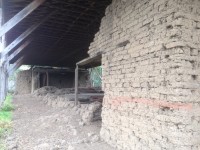My children remind me daily that summer will soon be here. They are so excited, however, it will take but a few hours, once the last bell has rung, for them to scream out those dreadful words, “I’m bored.” For parents looking for an educational and fun outlet for the little ones, I shall shamelessly promote two archaeological summer camps I will be conducting in a few short weeks.
This year the Sonoma Valley Historical Society will conduct a number of summer camps. From June 9-13, Archaeology Camp for ages 9-12 from 9-12 will take place at the Depot Museum. This camp is going to be incredible. I will focus on the original inhabitants of the area, the Coast Miwok, and on Mexican and Russian occupation of the area. Campers will learn a variety of archaeological techniques. We will be using real artifacts to clean, identify and interpret. Campers will learn how to identify archaeological sites and preserve them for future generations. For more information call head to http://depotparkmuseum.org/ or call 707-938-1762.
The following week from June 16-20, I will tackle younger campers, ages 4-10, at the Archaeology & Discovery Camp sponsored by Sonoma Academy of Dance & Arts (SADA). I have been conducting archaeology camp for SADA for many years now, shaping the young minds of Sonoma’s future archaeologists. Children will learn the basics of archaeology and the camp has a strong focus on culture. Each year all campers participate in a reenactment of the early history of Sonoma and by the time the week has ended, campers will know most of the bones in the human body! For more information head to http://sonomasummercamps.com.
Let’s talk a little about archaeology. Understanding the prehistory of any region includes addressing three primary goals. The first goal involves developing a chronology, the second is to reconstruct past life-ways, and the third is an attempt to explain culture change. In other words, how old is it, how did they do it, and what happened to make them try something else.
Reconstructing past life-ways focuses on what, how and where. Those living in marine environments developed strategies for acquiring food very different than those living in interior settings. Coastal groups constructed boats, fish hooks, tailoring their lifestyles to the type of foods they desired. Those whose diet focused on big game had little use for fish hooks. Big game required the construction of large projectile points. Certain deductions can be made by the sheer number of specific artifacts identified at any given site. Flat ground stones are generally thought to be found in sites whose inhabitants relied heavily on seeds and nuts, which were ground into meal, whereas the round mortar and elongated pestle were more typically used by those pounding then grinding larger nuts such as acorns.
Through time, archaeologists see shifts in technology representing culture change. It is at this juncture archaeologists focus on the why. Were such changes based on environmental changes, shifting cultural ideologies, a combination of both? Environmental factors such as climatic change may have affected what plants and animals were available for daily use. The most dramatic example is the shift from constantly migrating groups in search of large Pleistocene animals (mastodon) to more sedentary lifestyles focused on developing methods for acquiring seafood.
The link between archaeology and adverbs? Adverbs often speak to when, what, how, where and why or under what conditions something happened. So, the next time you’re in the backyard gardening and you happen upon that beautifully decorated piece of ceramic, the odd looking marble or time sensitive square nail, don’t forget to ask.
The answers may lead you down an unforgettable path of discovery. That is what I hope to achieve with the children attending archaeology camps this summer. Hope to see you there.


Be First to Comment